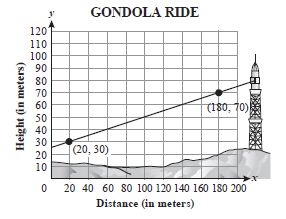General Information
Test Item Specifications
MA.912.A.3.12 Graph a linear equation or inequality in two variables with and without graphing technology. Write an equation or inequality represented by a given graph.
Students will determine the slope, x-intercept, and/or y-intercept of a line given its graph, its equation, or two points on the line.
Items may include lines that have zero slope or undefined slope.
Items may be set in either real-world or mathematical contexts.
Items may include linear equations in various forms, including standard, slope-intercept, and point-slope forms.
Graphics should be used in most of these items, as appropriate.
Fill-in response items may require that students provide a slope or the x-coordinate (or y-coordinate) of a point of interest.
Fill-in response items may have a negative answer.
Sample Test Items (2)
| Test Item # | Question | Difficulty | Type |
| Sample Item 1 | An architect designed an outdoor staircase for a house. The relationship between the height of the
steps and the length of the tread is modeled by the equation 57x - 95y = 0.
Which of the following represents the slope of the equation? |
N/A | MC: Multiple Choice |
| Sample Item 2 | An engineer needs to determine the slope between two points on a gondola ride in order to evaluate the power requirements when the gondola is full of passengers. A coordinate grid has been placed over a diagram between the two points, as shown below. For estimation purposes, a straight line between the two points can be used to find the slope. Assuming the cable runs in a straight line, what is the slope of the line between the two points shown? |
N/A | FR: Fill-in Response |
Related Resources
Unit/Lesson Sequence
| Name | Description |
| Direct and Inverse Variation | "Lesson 1 of two lessons teaches students about direct variation by allowing them to explore a simulated oil spill using toilet paper tissues (to represent land) and drops of vegetable oil (to simulate a volume of oil). Lesson 2 teaches students about inverse variation by exploring the relationship between the heights of a fixed amount of water poured into cylindrical containers of different sizes as compared to the area of the containers' bases." from Insights into Algebra 1 - Annenberg Foundation. |

